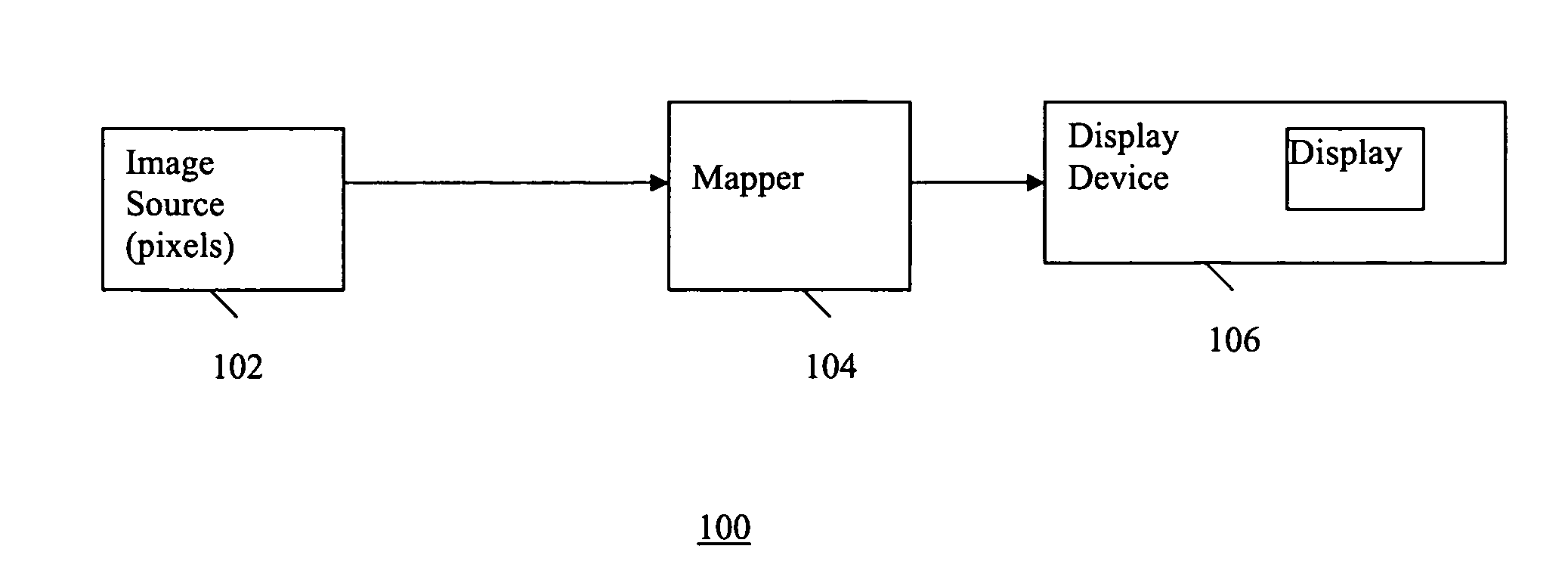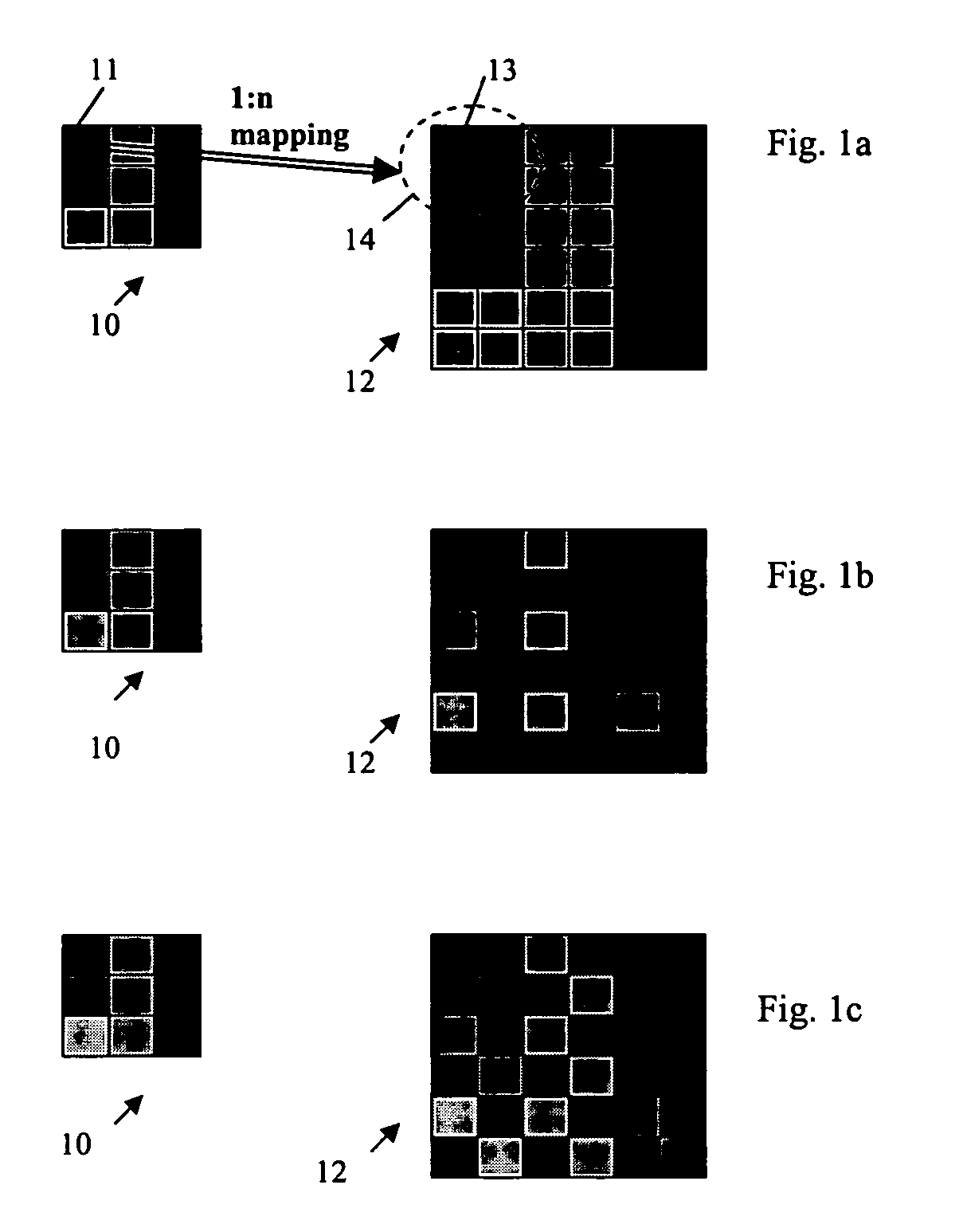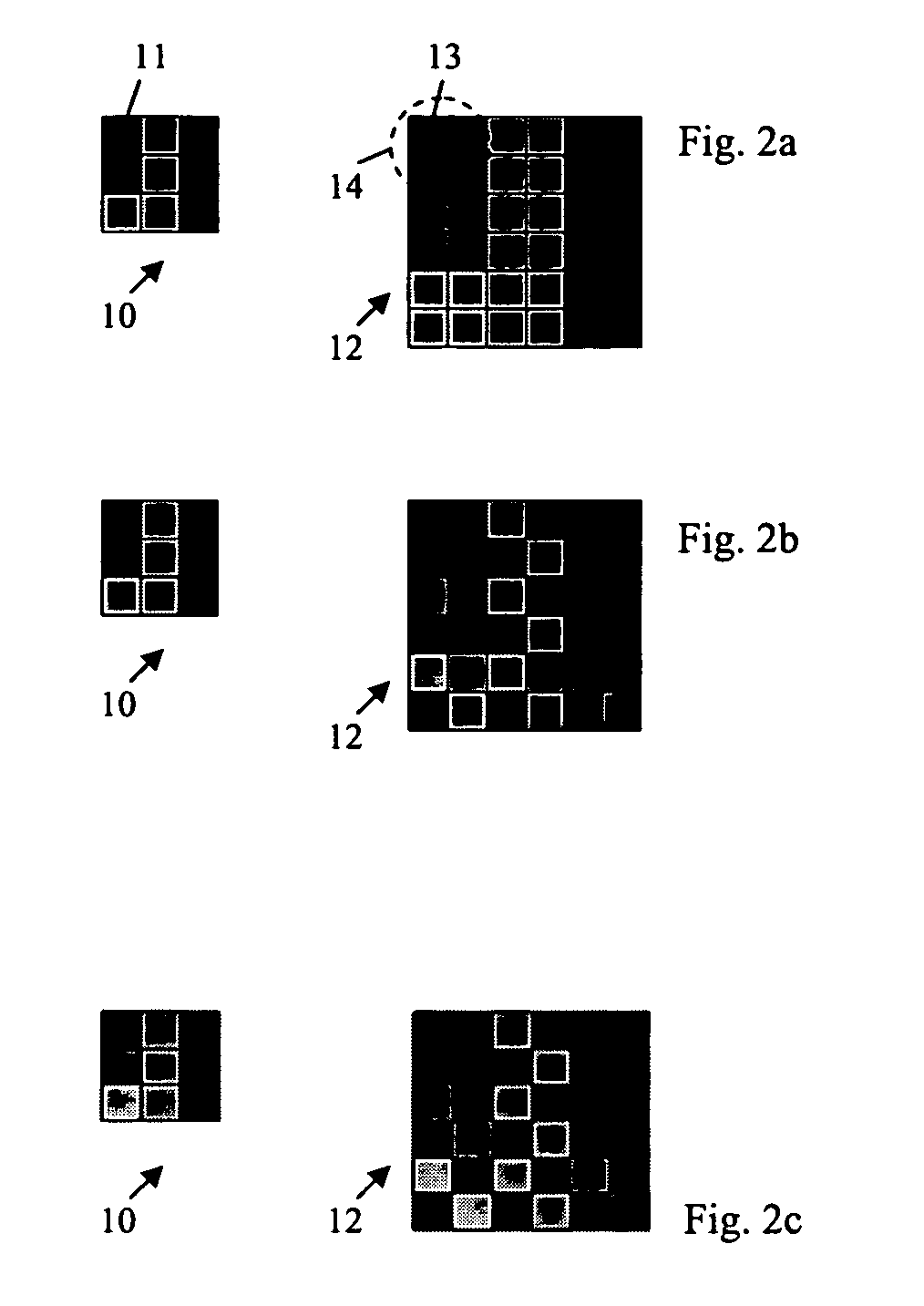Increased color depth, dynamic range and temporal response on electronic displays
a technology of dynamic range and temporal response, applied in the field of display of video image information, can solve the problems of high power consumption, ineffective techniques, and high price of bright backlight, and achieve the effect of increasing dynamic luminance range and color depth
- Summary
- Abstract
- Description
- Claims
- Application Information
AI Technical Summary
Benefits of technology
Problems solved by technology
Method used
Image
Examples
Embodiment Construction
[0030]A method of selectively mapping each pixel from a source image into n display pixels for display on a display screen (i.e., 1:n mapping wherein n is a positive integer), may be based on the pixel resolution of the input image and the native resolution of the display device, wherein the mapping provides a display image pixel format that is essentially optimized for display on the display device.
[0031]When a source image pixel (from a source device) is represented on a display by several (e.g., n) display pixels, according to an embodiment of the present invention, the characteristics of the display pixels are selectively controlled to provide desired visual effects such as: multiple luminance levels, increased color depth, increased dynamic luminance range, manipulation of temporal characteristics of the display, etc. Example embodiments of mapping of a source image pixel into several display pixels while selectively controlling characteristics of the display pixels, according ...
PUM
 Login to View More
Login to View More Abstract
Description
Claims
Application Information
 Login to View More
Login to View More - R&D
- Intellectual Property
- Life Sciences
- Materials
- Tech Scout
- Unparalleled Data Quality
- Higher Quality Content
- 60% Fewer Hallucinations
Browse by: Latest US Patents, China's latest patents, Technical Efficacy Thesaurus, Application Domain, Technology Topic, Popular Technical Reports.
© 2025 PatSnap. All rights reserved.Legal|Privacy policy|Modern Slavery Act Transparency Statement|Sitemap|About US| Contact US: help@patsnap.com



